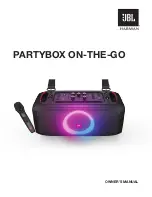
5
3-2 PERSONAL SAFETY AND POTENTIAL RISKS
When welding it is preferable to wear protective gloves on both hands, as it cannot be
completely ruled out that sparks and splashes occur during welding. The protective
gloves may not contain high proportions of quickly melting synthetic fibres. Protective
gloves also guard against UV-rays which are harmful during prolonged periods of
intensive welding.
Wear appropriate clothing with no synthetics.
The work piece and electrode tip can become extremely hot during welding, bringing a
possible risk of burns.
The point of the electrode, when clamped into the hand piece, signifies a risk of injury.
(Wounds caused by piercing or scratching of the hand, face, eyes, etc….).
Do not look into the arc without adequate eye protection. Only use a welders’
protective glare shield that contains a protective glass which conforms to
regulations (protection class 11, minimum).
The electric arc radiates rays of heat and light that can cause the user to be burned or
dazzled. In addition to this, the arc also gives off UV-radiation. If the eyes are not
adequately protected, these invisible ultraviolet rays can cause a very painful
conjunctivitis, the effects of which are only noticeable several hours after exposure.
Those lingering or working in close proximity to the electric arc, must be made aware of
the risks, and supplied with the appropriate protective equipment. Wherever necessary, a
protective screen should be erected.
When welding, especially in confined spaces, always make sure that there is enough
fresh air, as smoke and harmful gases are produced.
Because of the danger of explosions, no welding may be carried out on any containers
that have previously held gasses, fuels, petroleum, mineral oils or similar; even if these
have been standing empty for a prolonged period.
Specific regulations apply in high fire-risk and explosion-risk rooms or areas.
DANGER FROM SHIELDING-GAS CYLINDERS
When handling gas cylinders, always abide by the appropriate safety regulations.
In particular, gas bottles are to be safeguarded and secured so that they can neither
topple over nor fall off anything. In addition they are to be protected against thermal
shock so that they cannot heat up to above 50°C or are subjected to severe frost. A
prolonged contact to the suns rays is also to be avoided.
4
INSTALLATION
4-1 SET-UP GUIDELINES
The device is to be placed so that cooling air can freely circulate and reach all surfaces
of the machine.
The device must not be covered!
Always place the machine on a hard, insulating and non-combustible base material.
No metal dust, that may occur or accumulate (e.g. during abrasion work), may be
allowed to enter the machine.




































